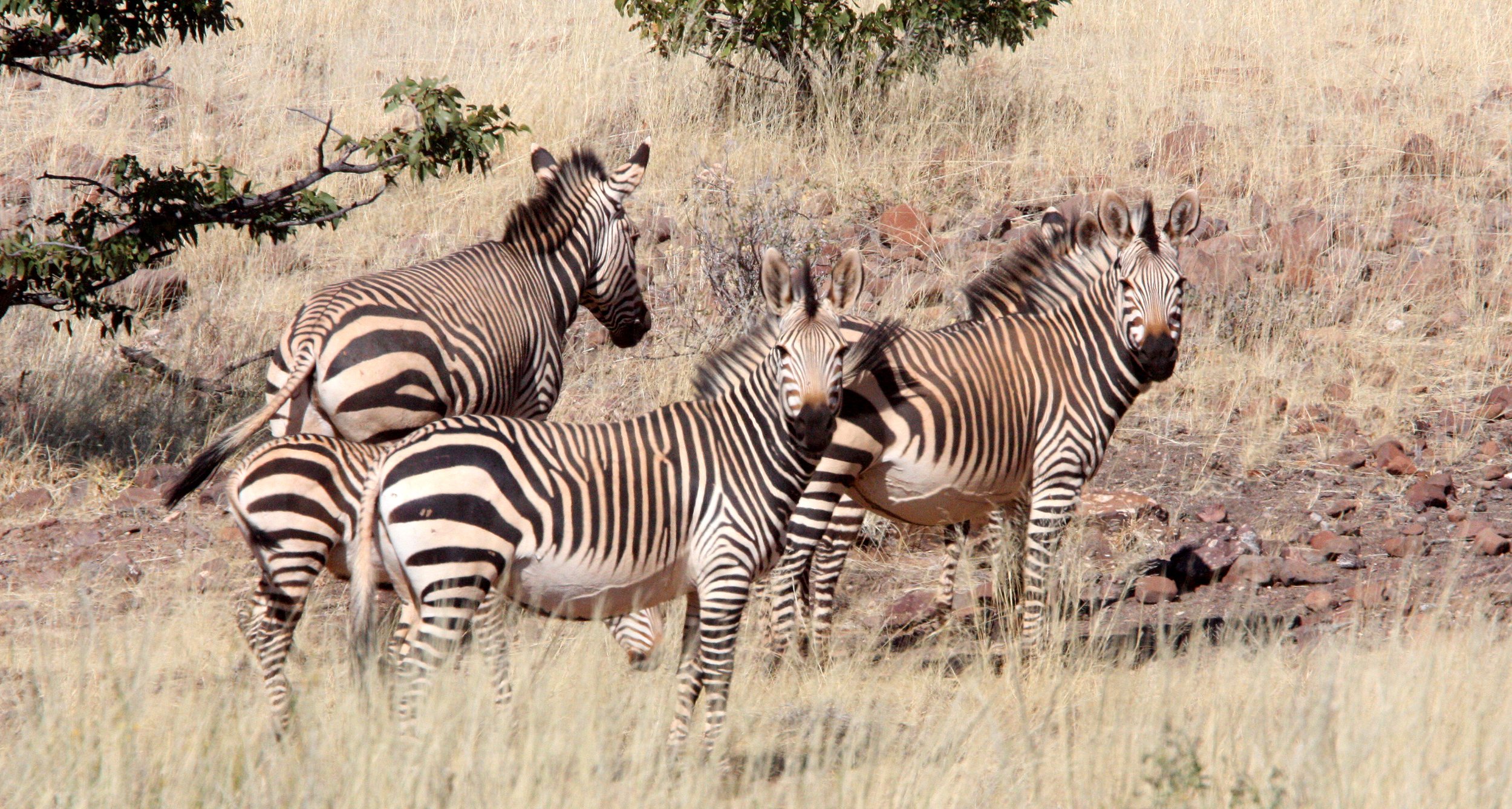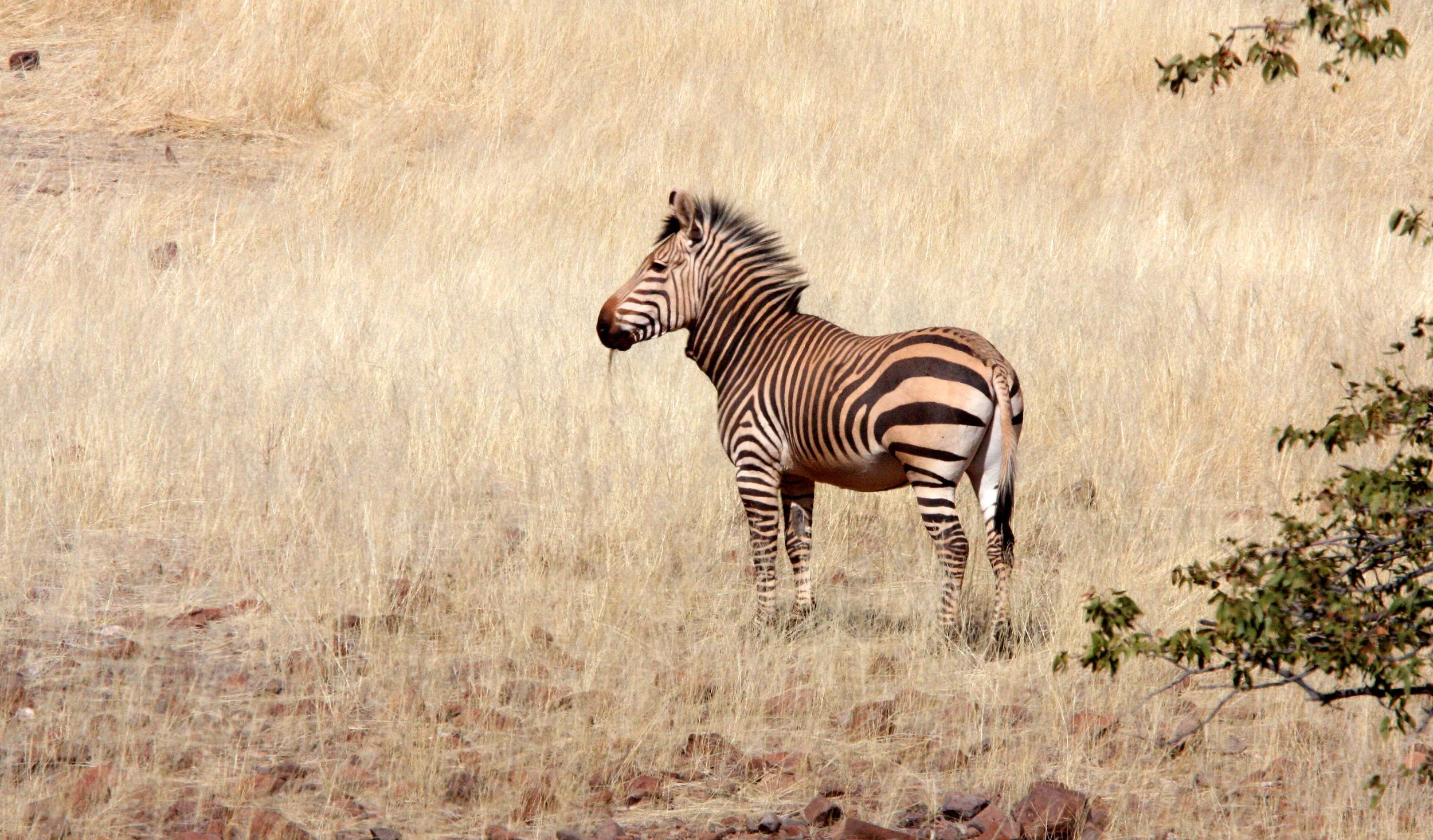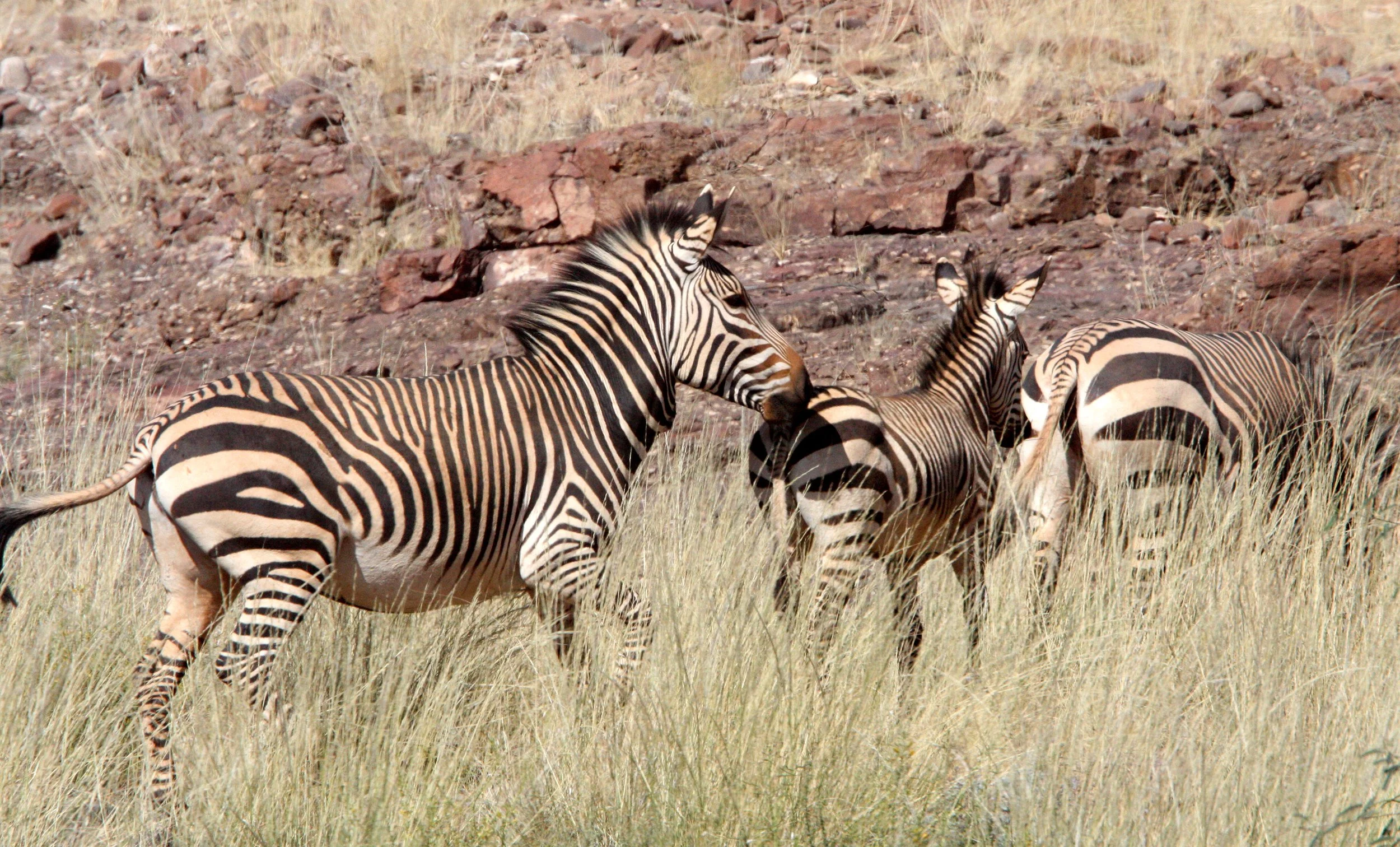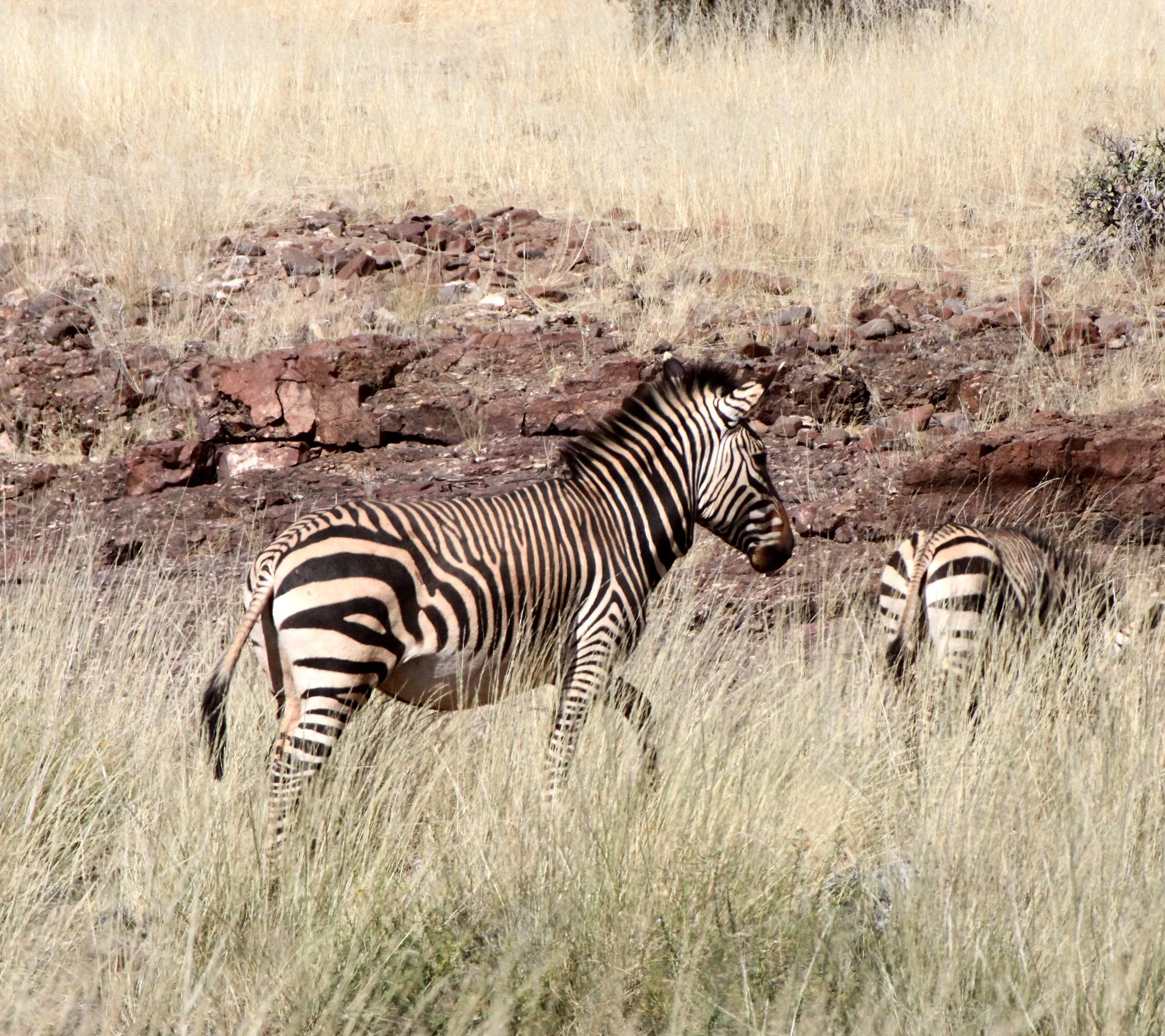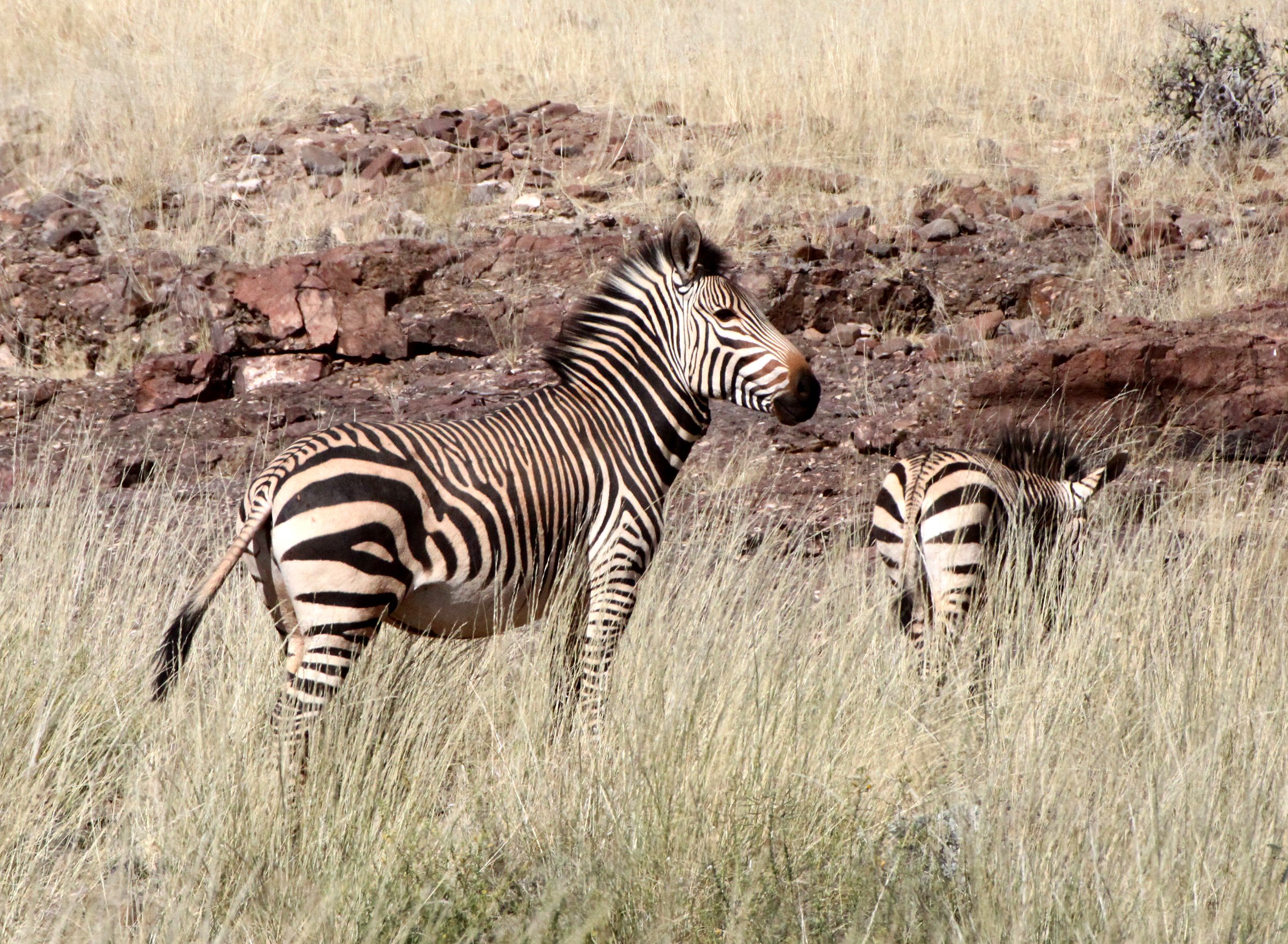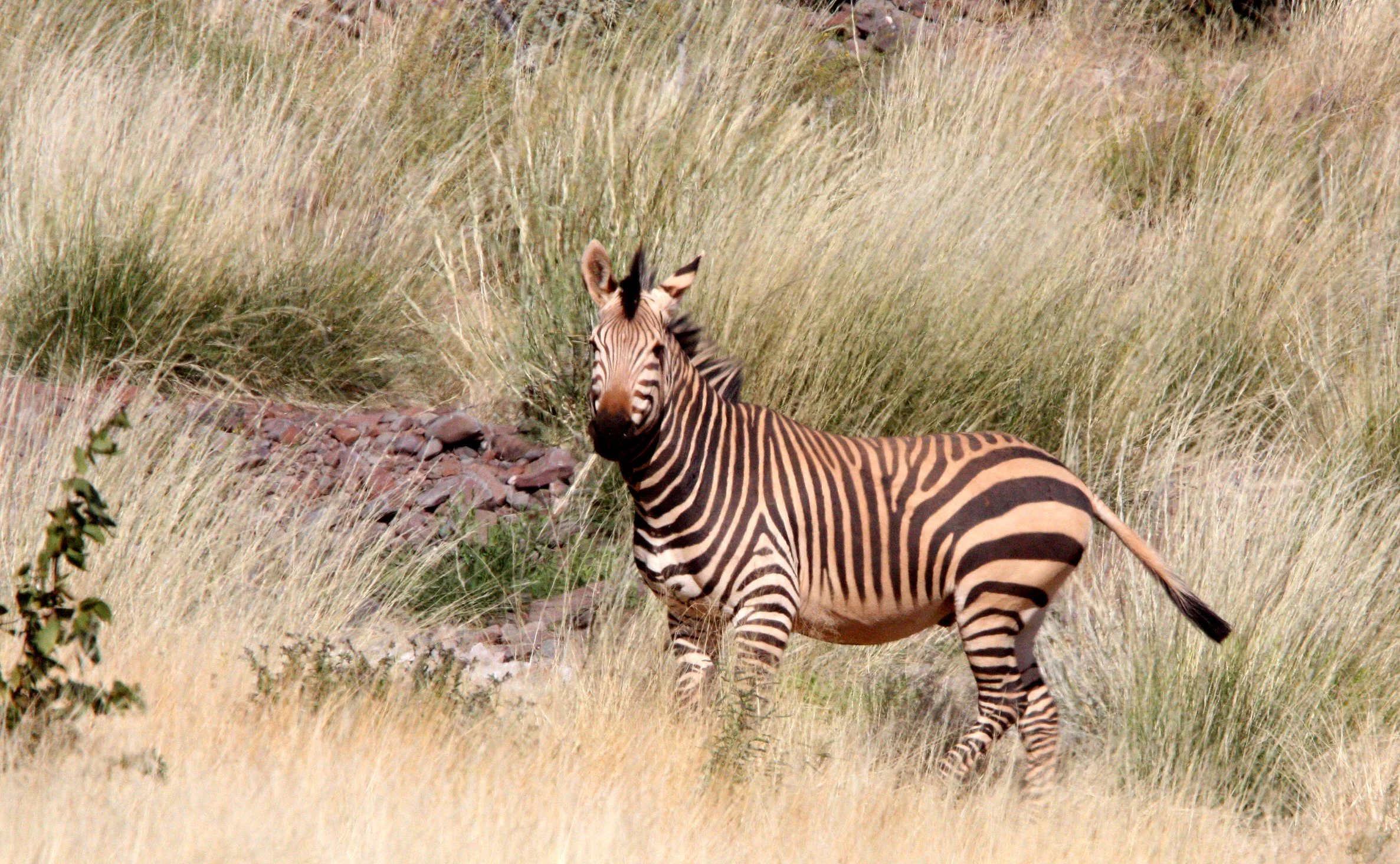Hartmann's mountain zebra (Equus zebra hartmannae) is a subspecies of the mountain zebra found in far south-western Angola and western Namibia, easily distinguished from other similar zebra species by its dewlap as well as the lack of stripes on its belly.
They are agile climbers and are able to live in arid conditions and steep mountainous country.
Hartmann's mountain zebras prefer to live in small groups ranging from as little as 3 individuals to as many as 12. Herds will either be a breeding herd comprising one stallion and potentially many mares or it will be a bachelor group and consist primarily of young males. Young males raised as a foal within the breeding herds will generally be sent away in as little as 24 months and they themselves may become the stallion of their own breeding herd in as little as 5 years. When two breeding herds come into contact with one another each respective stallion will engage the other in an elaborate posturing ritual.
Hartmann's Mountain zebra has been described as an ecosystem engineer, while engaging in their unique dust bathing behavior they create a persistent depression known as a rolling pit. Even after the zebra abandons a rolling pit, they will generally remain visible for many years. These rolling pits appear to provide a favorable microsite for the native vegetation ultimately leading to denser growth throughout the pit.
These images are of herds seen in Damaraland Namibia.











